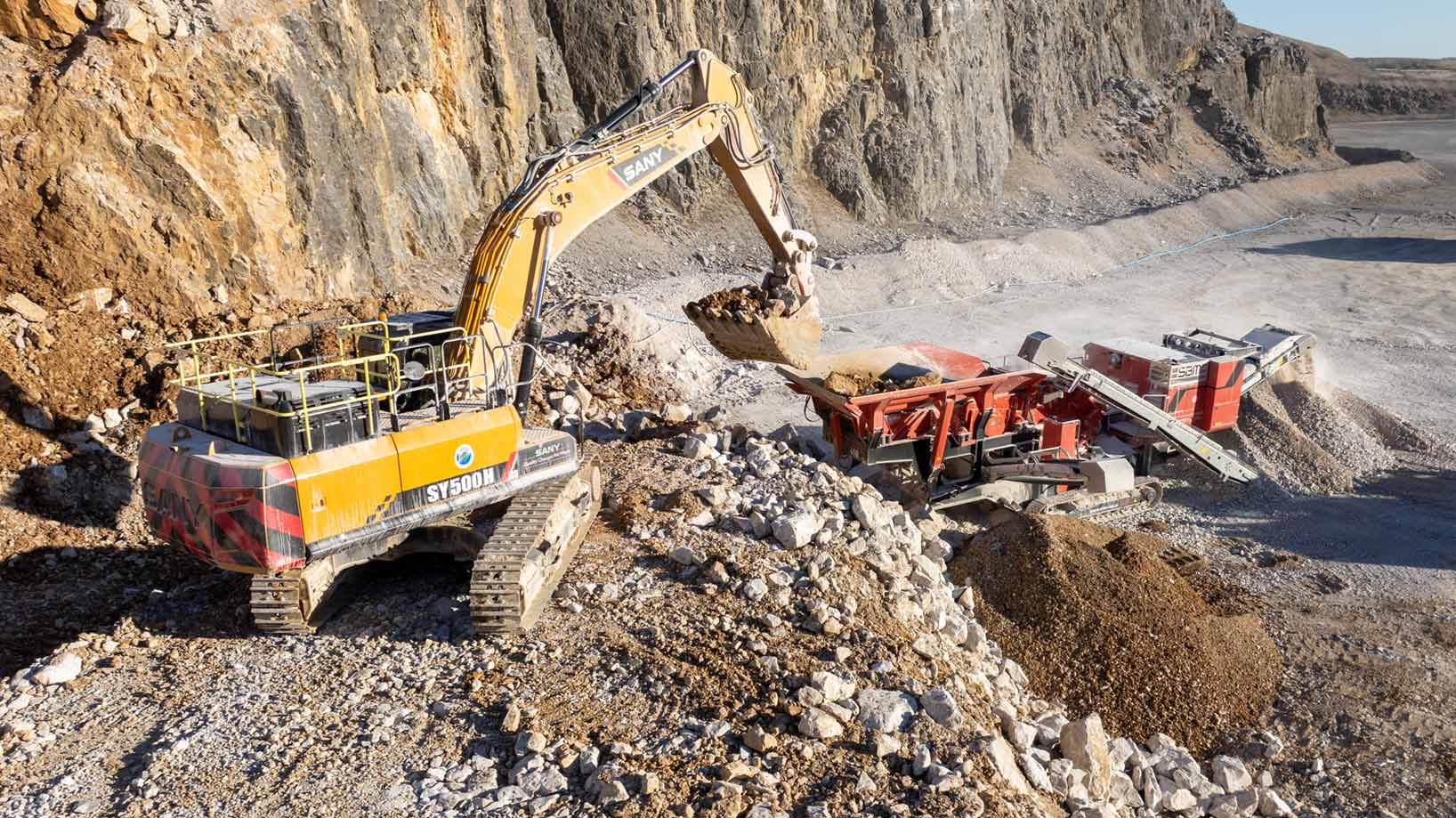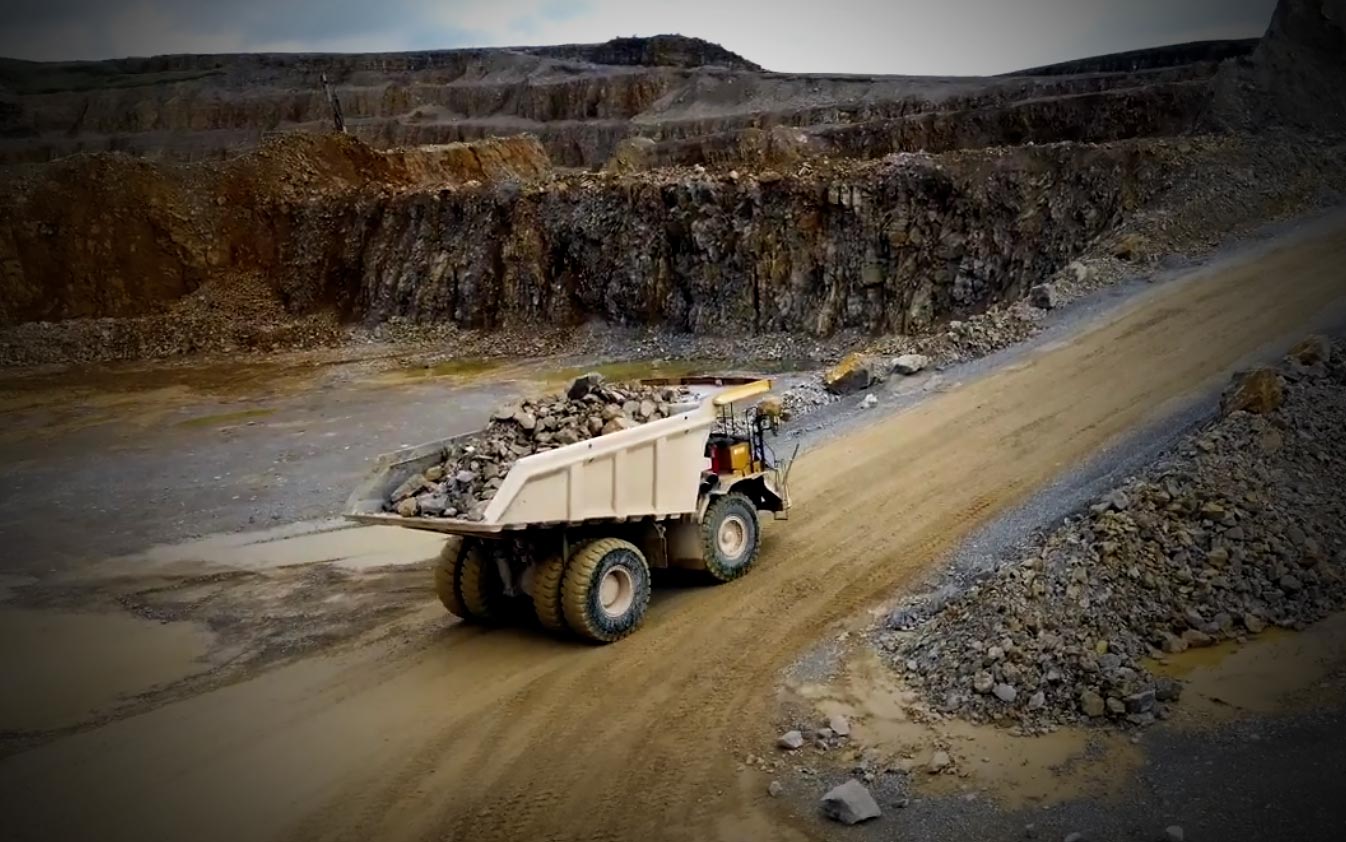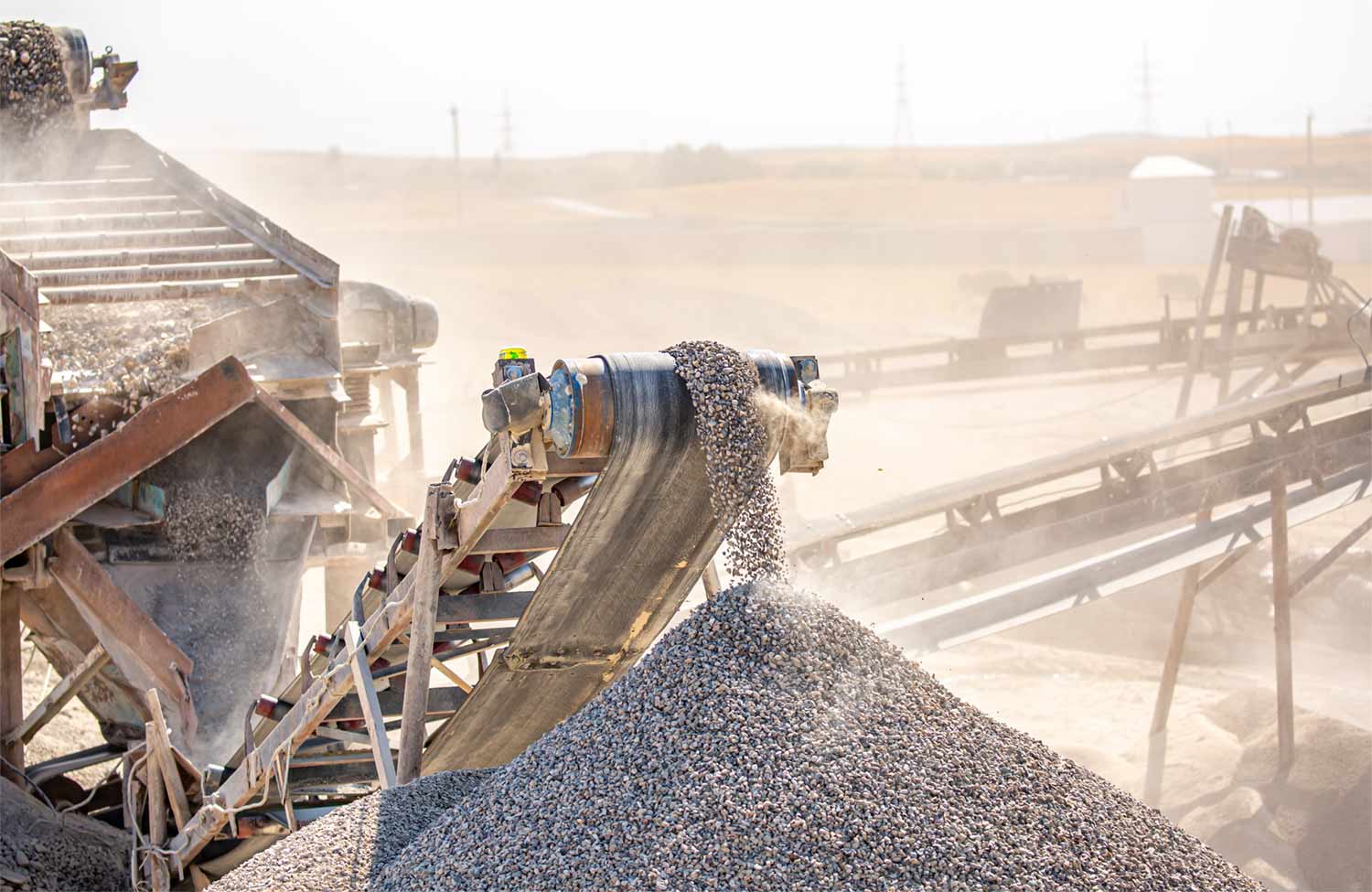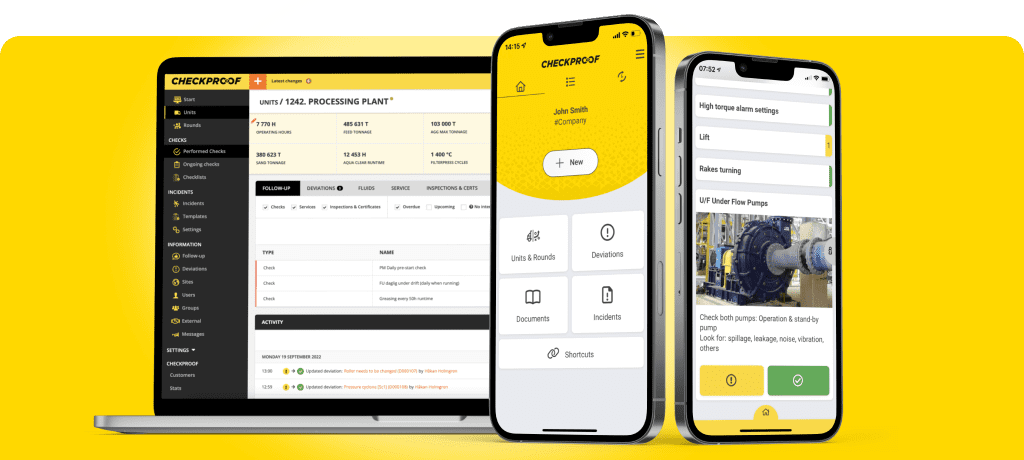Join us at AGG1, St Louis, MO - America's Center Convention Complex: 25-27 March
Data-driven optimization through digital tools has helped Swerock – a major Swedish construction material supplier – reduce their maintenance costs per produced metric ton by a third. Find out why Swerock’s Project Director Payman Namvar has chosen a somewhat unusual setup for his team’s maintenance work, and why he considers CheckProof the most modern maintenance system on the market today.
Swerock, a subsidiary of the Nordic construction giant Peab, is one of Sweden’s largest suppliers of mixed concrete, gravel, and crushed rock. The company also provides the building and construction sector with transport, machinery, recycling, environmental services, asphalt, and more.
Project Director Payman Namvar manages a maintenance team of 13 people working out of Swerock’s pit outside of Gothenburg on the Swedish west coast. The team’s mechanics, electricians, and welders perform repairs and preventive maintenance for all of the company’s pits and machines in the region.
Payman is also in charge of Swerock’s company-wide efforts to streamline and standardize maintenance work through internal training and digitization. He’s set the bar high:
– Our whole mindset regarding maintenance and how we develop strategies and processes is based on the latest European standard (SS-EN 13306:2017). That includes everything from the terminology we use to the KPIs we measure. This standard is based on substantial expertise, and when everyone follows it, we’re able to homogenize how we work across teams and make relevant comparisons between different parts of the organization. When everyone speaks the same language it’s also easier to communicate with manufacturers, customers, and other external parties.
A setup that requires the right maintenance system
The way Payman and his team have chosen to organize Swerock’s maintenance work is somewhat unusual in the industry. Instead of spreading the maintenance costs evenly across the organization as a whole, they’ve built up a maintenance department that functions like a company within the company, with its own separate finances. Both internal and external clients are billed for the department’s work hours and efforts.
– Our services and pricing need to be competitive. The truck drivers and machine operators, as well as production units within the company, shouldn’t choose us just because we’re an internal department, but because we are the best alternative, Payman explains.
This type of setup requires thorough documentation and a top-of-the-line digital platform:
– Our digital maintenance system has to support more than just routines and case management. The financial aspects are just as important. Without registered job orders or logged hours, we simply can’t bill our internal and external customers for the work we do.
“The most modern maintenance system on the market today”
Since the spring of 2018, both Swerock and Peab Asphalt (another part of the Peab group) use CheckProof’s platform and mobile app for all checklists, deviation reporting, and digital documentation linked to their maintenance work. With a multitude of digital maintenance systems to choose from on the market: what makes Payman and his team prefer CheckProof?
– CheckProof stands out from the rest through user-friendliness and smart features such as RFID tags and integrations, but above all by being so open and flexible as a company. It’s all action with new ideas and updates in the app pretty much on a monthly basis. They’re always one step ahead and develop together with their customers. This is unusual in the industry and really sets them apart from other system vendors I’ve worked with. To me, CheckProof is the most modern maintenance system on the market today”, Payman says.
How does Swerock use CheckProof in their day-to-day work? The maintenance team has a vast number of recurring routines that need to be performed daily, weekly, or yearly. All of these are set up as time-based checklists in the CheckProof platform. When a check is due, the person assigned to it receives a notification in their mobile app, including clear step-by-step instructions on what to look at, feel for, or measure.
– If they notice anything that requires attention, they create a deviation directly from their mobile device. The person responsible for correcting the issue gets alerted through the system and the task remains on their to-do list until it’s taken care of, either immediately if it’s urgent, or at the next planned downtime, Payman explains.
Smarter maintenance with RFID tags and automatic monitoring
In a stationary production plant, where the same people use the same machines daily, the maintenance routines eventually become second nature to staff. But if someone falls ill, retires, or leaves the company, there’s a great risk of knowledge and processes being lost.
– With the digital checklists in CheckProof, we can make sure that all necessary information is available, regardless of who’s on the site, says Payman.
Clear and easily accessible routines are even more important when both workplaces and staff are spread out over large areas. Peab Asphalt has hundreds of coating machines out on the roads. For the person doing maintenance checks on these machines, it’s not always obvious which routine is the correct one. To tackle this challenge, RFID tags have been attached to the machines and connected to the CheckProof platform. To access the right checklist for each machine, the employee can simply scan the tag with their mobile phone. All actions during the check are also automatically registered in the correct place in the system.
– This removes any uncertainty and saves huge amounts of time for field staff. Since everything is documented, you can always go back and double-check what’s been done. And if someone reports a deviation, it’s automatically sent to the right person, Payman explains.
In addition to checklist-based routines for manual inspections in CheckProof, the Swerock maintenance team has also started using automatic monitoring of mission-critical parts of the
pre-crusher. Connected sensors measure vibrations and temperature to detect maintenance needs in time. The plan is to let these signals trigger an alarm in CheckProof whenever there is a deviation from the expected levels; CheckProof’s development team is currently working on an integration to enable this.
– To avoid unplanned stoppages, we want to do our maintenance work in time, but not too early or more of it than necessary. To achieve this, we need to strive for an even smarter way of working, through what’s known as predictive maintenance, says Payman, who also sees great time-saving potential:
– Our employees no longer need to go out to each machine and make a subjective assessment of its status. This gives us more time for tasks that require hands-on effort.
Reduced maintenance costs through data-driven optimization
CheckProof has also helped Payman and his team to implement more data-driven ways of working:
– Because we get a full overview of all our data in CheckProof, we can try different work methods, measure the outcomes, and adjust accordingly to keep improving. Without a digital tool of this caliber, that would have been very difficult.
What tangible results have Swerock seen since they started optimizing their work methods with the help of CheckProof?
– One of our main KPIs at Swerock is maintenance cost per produced metric ton. For this metric, we’ve seen a steady year-on-year decrease since we started working with CheckProof. The trend might be broken for 2022 because of the rapid increase in fuel and material costs. But if we compare 2018 and 2021, the maintenance cost per produced metric ton has been reduced by about 33%. We also see a decrease in the work hours spent on immediate corrective maintenance. That’s a clear signal that we’re headed in the right direction.
Even skeptics among staff were won over
Introducing new digital work tools in an organization is rarely simple. Swerock was no exception:
– When we first started rolling out CheckProof, it was a challenge to get everyone on board. To successfully implement a change like this, you need to show the benefits to get buy-in from staff, but at the same time make it clear that it’s the only way forward. In this process, we saw a great deal of ownership, determination, and engagement from our local managers, team leaders, and administrators. They really played a huge part in making it a smooth implementation in each part of the organization.
Payman ensures that even the people who were the most skeptical at first have since changed their opinion:
– Now they think it’s great. The system is really user-friendly. Everyone gets an overview of what they need to do during the day and how well the team is keeping up with the plan.
Want to know what CheckProof can do for you?
CheckProof's easy-to-use app makes it easier to do the right thing at the right time. Discover how you can run world-class maintenance that is both cost-effective and sustainable.

Maximize Efficiency with an OEE Monitoring System

Plant Asset Management Software:Maximizing Equipment Uptime

Machine Downtime Tracking: The key to smarter, more efficient operations

CMMS Software: What it is and why it’s key to First-Class Maintenance Operations

Revolutionizing Compliance: Banner Contracts on managing ISO audits with CheckProof

Implementation of Digital Systems: Rolling Out CheckProof Across Teams

Von Kraftstoffeinsparungen bis hin zu Produktionssteigerungen: Wie Cemex Deutschland erfolgreich CheckProof implementiert hat

A Recap of the CheckProof Industry Event & 10th Anniversary Celebration

Trend Report: Key moments in the Construction Materials industry (2014–2024)




